Table of contents of the article
ToggleThe grape fruit moth causes significant damage to fruits, affecting their quality and economic value. In this article on your website, WORLD OF PLANTS, we will discuss how to identify it and effective methods of combating it.
Symptoms of grape fruit moth disease
- Scientific name : Lobesia botrana
- the family : Lepidoptera
- Type of disease : Insect
- The larvae of the first generation feed on flower buds, where they collect several small fruits with silk threads to form semi-nests in which they live.
- The larvae of other generations feed on ripe grape fruits and help the brown rot fungus grow
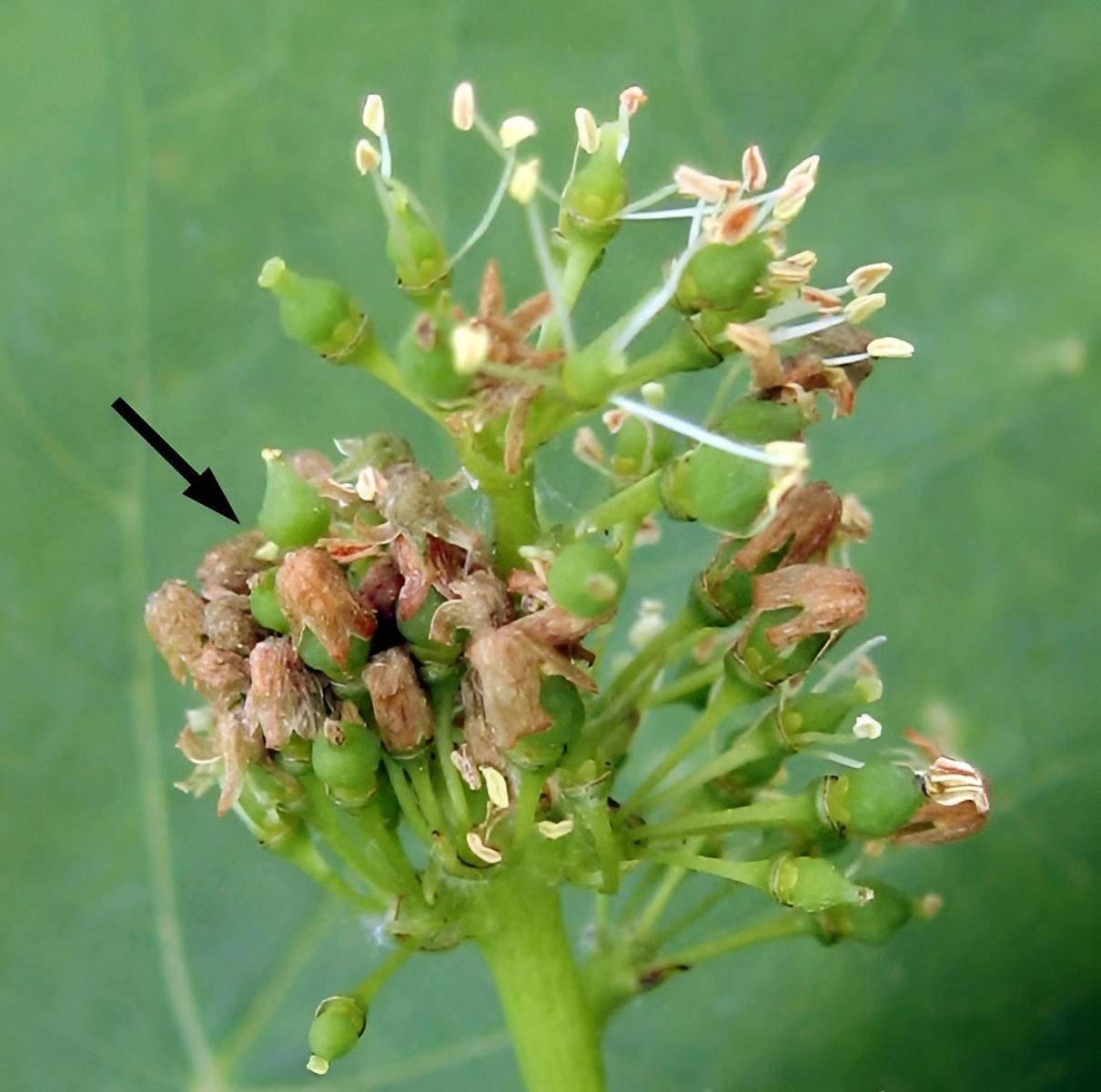
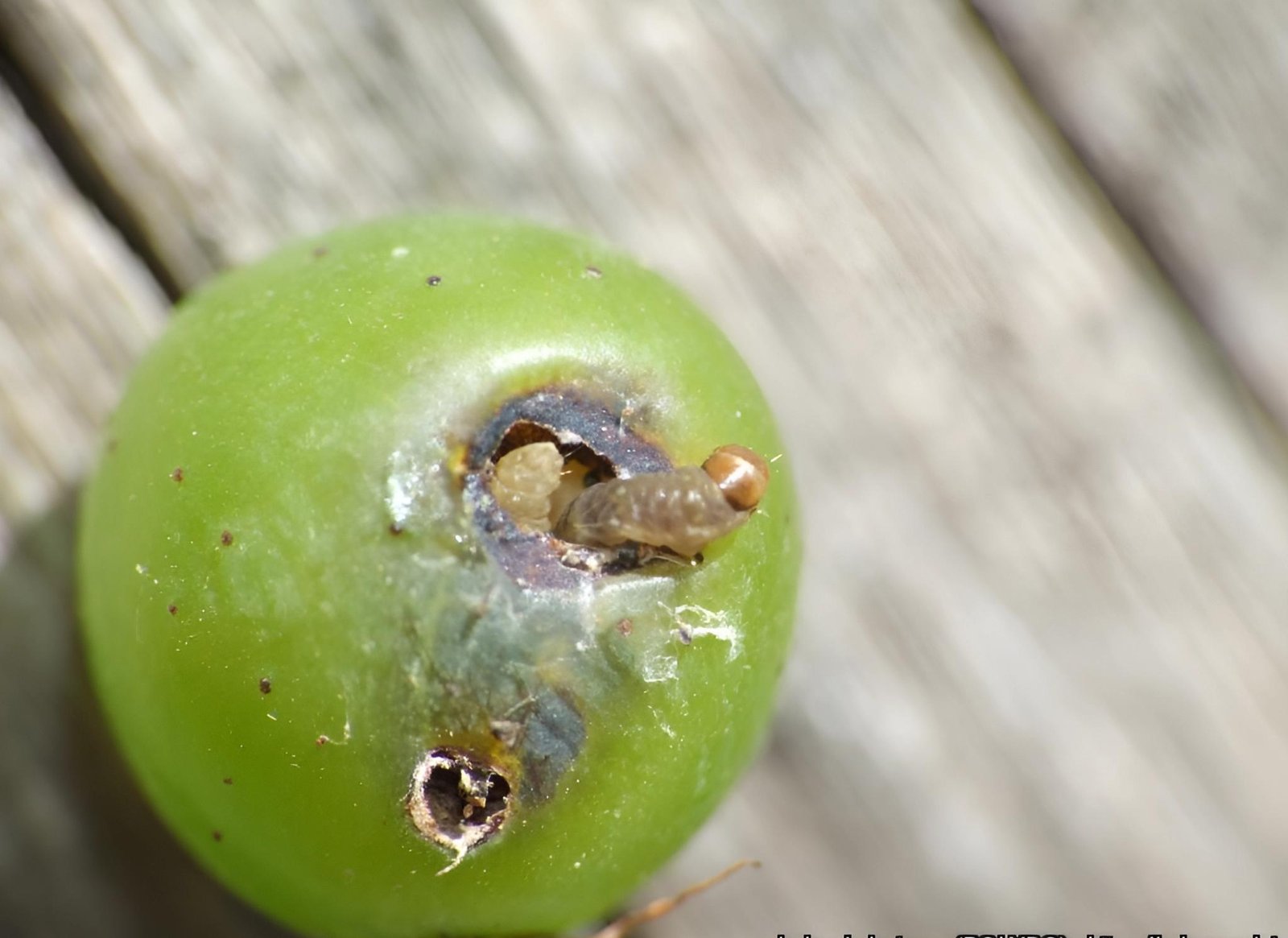
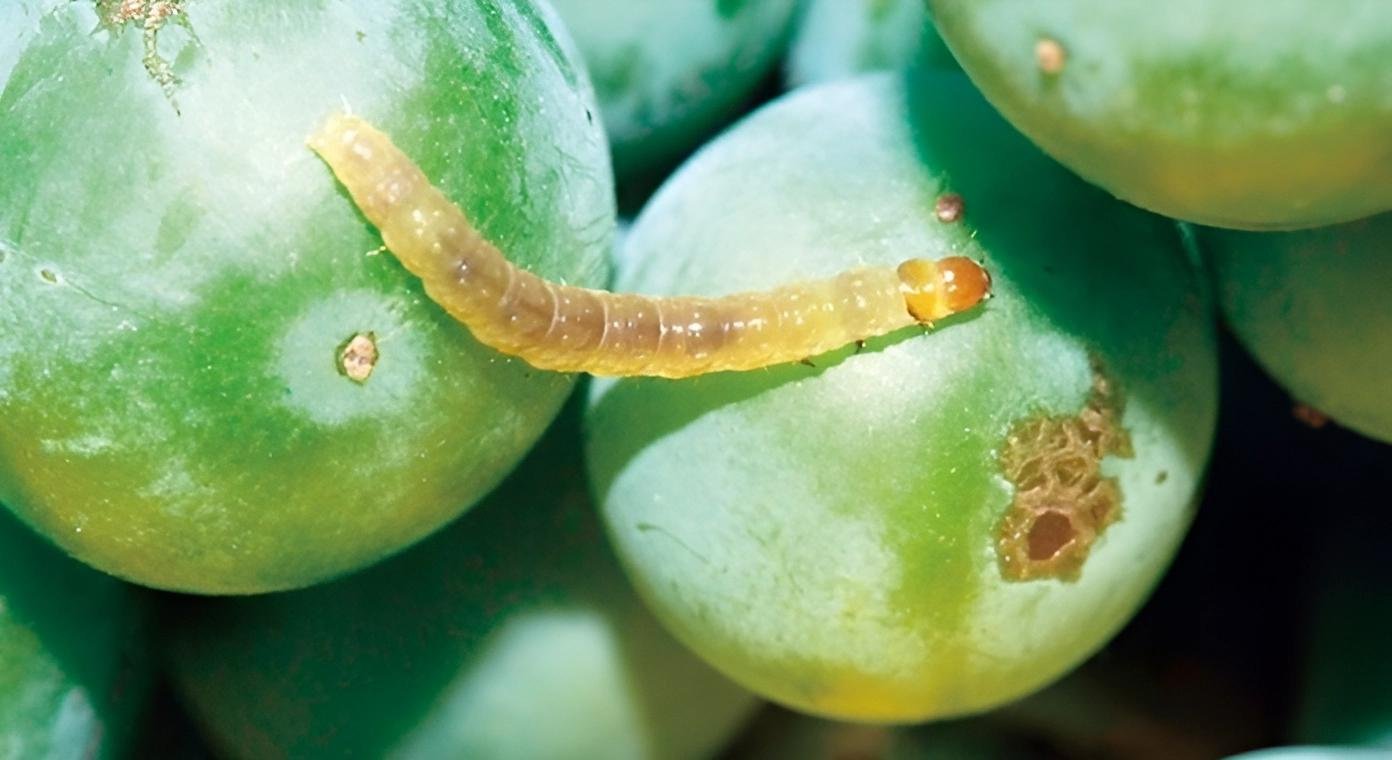
Description of the grape fruit moth
A small butterfly, brown in color. There are spots on the wings that give it a mottled appearance. The end of the front wing is fringed, and the rear wings are grayish-brown. The color of the larva is greenish-brown, and the pupa is brown in color and embeds inside a silk cocoon under the bark of the stem of the host plant. The larvae have 5 instars, their length at hatching ranges from 0.98-0.95 mm. It ends in the fifth instar at 11-15 mm. The head of the larva in the last instar is yellowish brown, the anterior thoracic plate is brown, the thoracic legs are brown, and there are 6-8 spines at the back of the body.
– The pupa is huge, oval with a rounded front, uniformly green in color, and the pupa is completely covered with gray dust
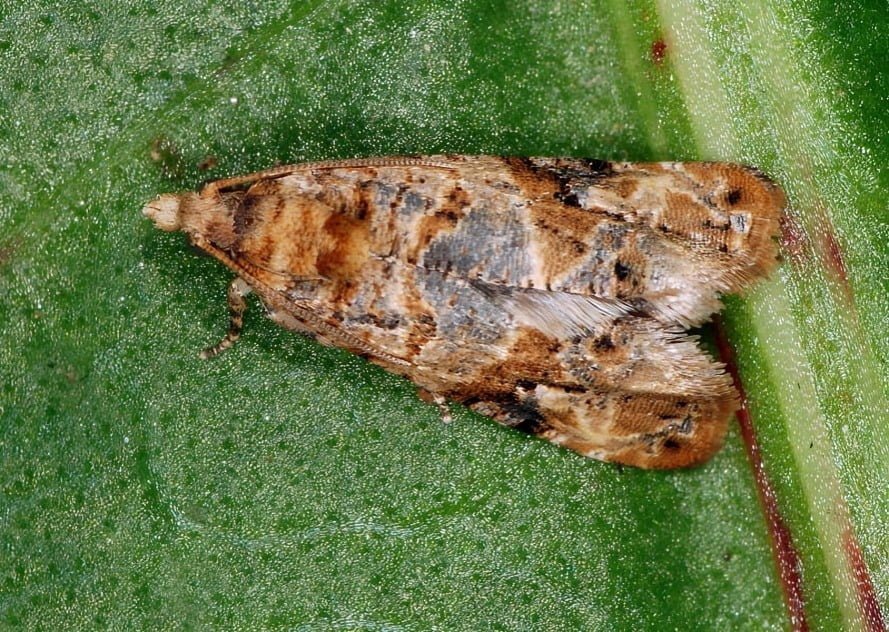
Causes of grape fruit moth
- Fallen plant parts where the pupa hides
- Successive drops in temperature are interspersed with sudden and rapid rises
- Relative humidity of 65%. and a photoperiod of 16:8 (L:D)
- Weeds.
- The presence of holes in the foreskin.
- Failure to provide the tree with balanced fertilization and appropriate irrigation.
Suitable conditions for the spread of grapefruit moth
The average temperature of 14 is the appropriate temperature for the grapevine moth to begin its activity in the field, which was estimated at 11°C for males and 8.12°C for females.
Development cycle of the grapefruit moth
- The insect has 2-4 generations annually, but it can complete a fifth generation under ideal conditions, and the number of generations is determined by several factors: 1 - Photoperiod. 2- Temperature 3 Humidity. 4- Latitude. 5- Food quality. 6- The effect of parasites and predators.
- In the spring, butterflies are active in the first part of the night, mate and lay eggs on buds before they open and on the bark of plants. Most of the eggs are laid on flower clusters as soon as they are formed (50-110 eggs).
- The second generation butterflies fly at the end of June
- Damage caused by larvae is greatest as a result of third-generation larvae feeding on ripe grape clusters
- A percentage of pupae enter the dormant phase due to the photoperiod length as of the second generation insects
- The rest of the virgins spend the winter under the bark, only to resume their life cycle again in the spring
Losses of the spread of the grape fruit moth
It is not possible to expect to obtain a crop or economic return from agriculture without carrying out work to combat this pest. The infection rate of this insect in uncontrolled orchards can reach up to 95 %
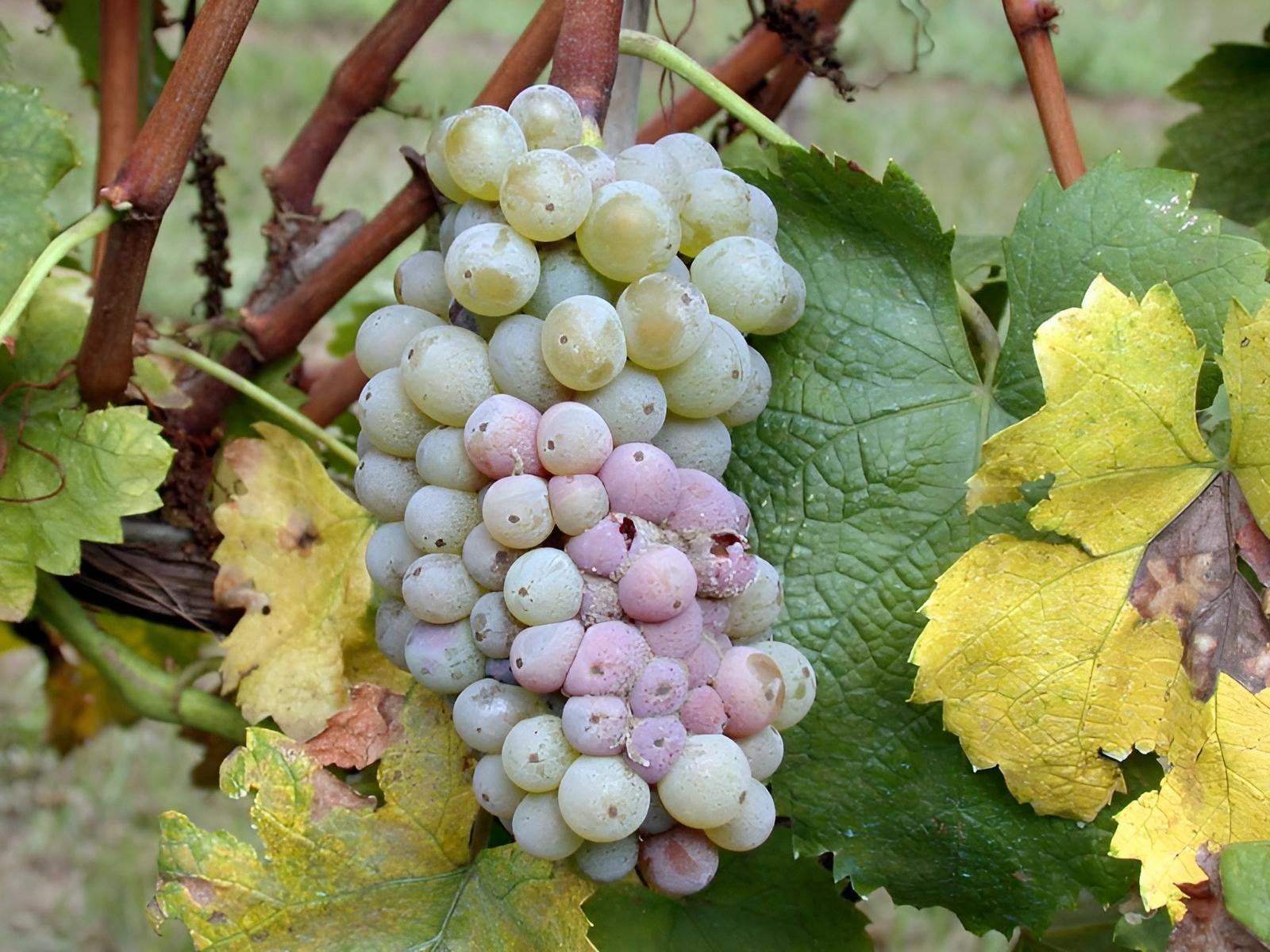
Grape fruit moth control strategy
Preventive measures to prevent grape fruit moth
- Getting rid of weeds, which are considered their second breadwinner and support during the winter
- Removing dead bark and spraying with winter oils
- Remove infected fruits and burn them
- By spreading large amounts of sex pheromone in the field, which makes the male unable to locate the female, so fertilization does not occur
- Deep plowing of the soil.
- Proper pruning
- Balanced fertilization.
Chemical and organic control recommendations against the grape fruit moth
- Organic control :
- Accurate prediction of when eggs will hatch is an essential factor for accurate spray timing. The best ways to determine this are: 1- Calculating the rate of heat accumulation per day - 2- Pheromone traps. 3- Direct field observations.
- Mechanical control such as cardboard strips
- Place dynamic enemies (such as a frog)
- Chemical control :
- Phosphorous pesticides are used, mainly Azinphosmethyl, in addition to Phosmet and Diazinon.
- Pyrogenic pesticides can be used because of their properties such as Esfenvalerate and Henvalerate
- A group of growth regulators such as Chlorfluazuron and Triflumuron can be used.
In conclusion, we would like to note that we, at the world of plants website, offer you all the necessary services in the world of plants, we provide all farmers and those interested in plants with three main services::-
- Artificial intelligence consulting service to help you identify diseases that affect plants and how to deal with them.
- Blog about plants, plant diseases and care of various crops ... You are currently browsing one of her articles right now.
- An application that provides agricultural consultations to clients, as well as a service for imaging diseases and knowing their treatment for free – Click to download the Android version from Google Play Store، Click to download the IOS version from the Apple App Store.
References:
- Ioriatti, CLAUDIO, Anfora, GIANFRANCO, Tasin, MARCO, De Cristofaro, A., Witzgall, P., & Lucchi, A. (2011). Chemical ecology and management of Lobesia botrana (Lepidoptera: Tortricidae). Journal of economic entomology, 104(4), 1125-1137
- Varela, L. G., Smith, R. J., Cooper, M. L., & Hoenisch, R. W. (2010). European grapevine moth, Lobesia botrana. Napa Valley vineyards. Pract. Winery Vineyard, 2010, 1-5
- Gilligan, TM, Epstein, ME, Passoa, SC, Powell, JA, Sage, OC, & Brown, JW (2011). Discovery of Lobesia botrana ([Denis & Schiffermüller]) in California: an invasive species new to North America (Lepidoptera: Tortricidae). Proceedings of the Entomological Society of Washington, 113(1), 14-30.
- Martín‐Vertedor, D., Ferrero‐García, J. J., & Torres‐Vila, L. M. (2010). Global warming affects phenology and voltinism of Lobesia botrana in Spain. Agricultural and Forest Entomology, 12(2), 169-176
- Chemical Ecology and Management of Lobesia botrana (Lepidoptera: Tortricidae) – Journal of Economic Entomology
- Comparison of Temperature-Dependent Growth Models with the Development of Lobesia botrana – University of Oxford
- Global warming affects phenology and voltinism of Lobesia botrana in Spain – WILEY ONLINE LIBRARY




